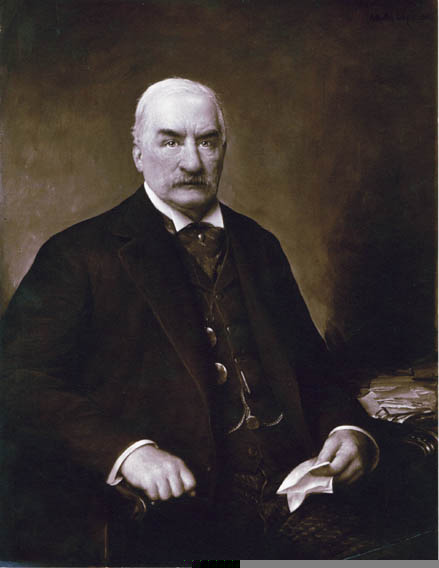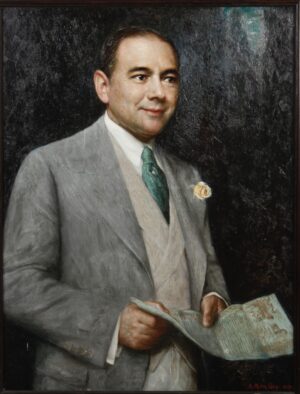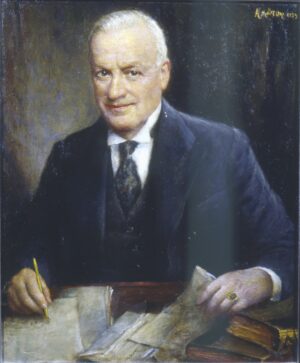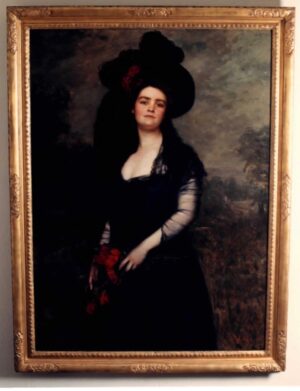MORGAN, John Pierpont (1904) (Version 1)
Description:
Three quarter length seated facing to the right, with papers in his left hand.
Location:
Present Whereabouts Unknown.
Bibliography:
Town & Country, New York, July 16, 1904
Town & Country, New York, May 27, 1905
John Pierpont Morgan was born in Hartford Connecticut on April 17, 1837, and educated in Europe and the University of Gottingen where he was considered a mathematical genius. In his early twenties he acted as American representative of his father’s London banking firm, and during the years of the American Civil War and afterwards in the development of American industry and railroads played a major role as a banker and organizer, with his credit considered safer than that of the United States government. One of the foremost collectors of the nineteenth and early twentieth centuries, he acquired major works of art wherever in the world he was travelling, most of which are today in American museums. He died in Rome on March 13, 1913.
In the Times Picayune, New Orleans, Tuesday, October 6, 1942, Muller-Ury told a reporter the following: ‘Morgan never missed a sitting. When I commented on this, he said, “And why should I break an appointment? I have no patience with people who do!”’
Select Bibliography:
Frederick Lewis Allen, The Great Pierpont Morgan, New York, 1948
Cass Canfield, The Incredible Pierpont Morgan: Financier & Art Collector, London, 1974.
Louis Auchincloss, J. P. Morgan: The Financier as Collector, New York, 1990
Jean Strouse, Morgan: American Financier, New York 1999.
—
According to a note written on a page of the artist’s second scrapbook, J. Pierpont Morgan and his daughter Mrs. Satterlee called on the artist on February 22, 1904 to view his portraits of Senator Hanna and James J. Hill and with the intention of commissioning a portrait. This work must have been finished substantially by the first week of March that same year, as in a letter in the artist’s papers, dated March 7, 1904, Morgan’s son-in-law Herbert Satterlee wrote from his Law Office at 120, Broadway, New York, confirming an order for the frame, and indicating he wished the artist ‘…success in the matter in which we are both interested…’ during his absence from the city until March 21. The picture, then, was clearly intended for the home of Satterlee and Morgan’s daughter, a fact certainly confirmed by a letter (same source) dated September 9, 1904 from Satterlee:
‘Dear Mr. Ury,
I enclose my cheque to your order for $3750 in payment of the portrait of Mr. Morgan, with which I am better satisfied the longer I look at it.
I will be very glad to look at the other picture, but I hardly think it can be as good as the splendid likeness that you have produced for me.
The picture has been hung over the mantel in the library, and I have directed Selleck to return the easel to your studio. Please acknowledge receipt.
With kindest regards, I remain,
Very truly yours, Herbert L. Satterlee.’
The ‘other picture’ must be the second version catalogued here.





